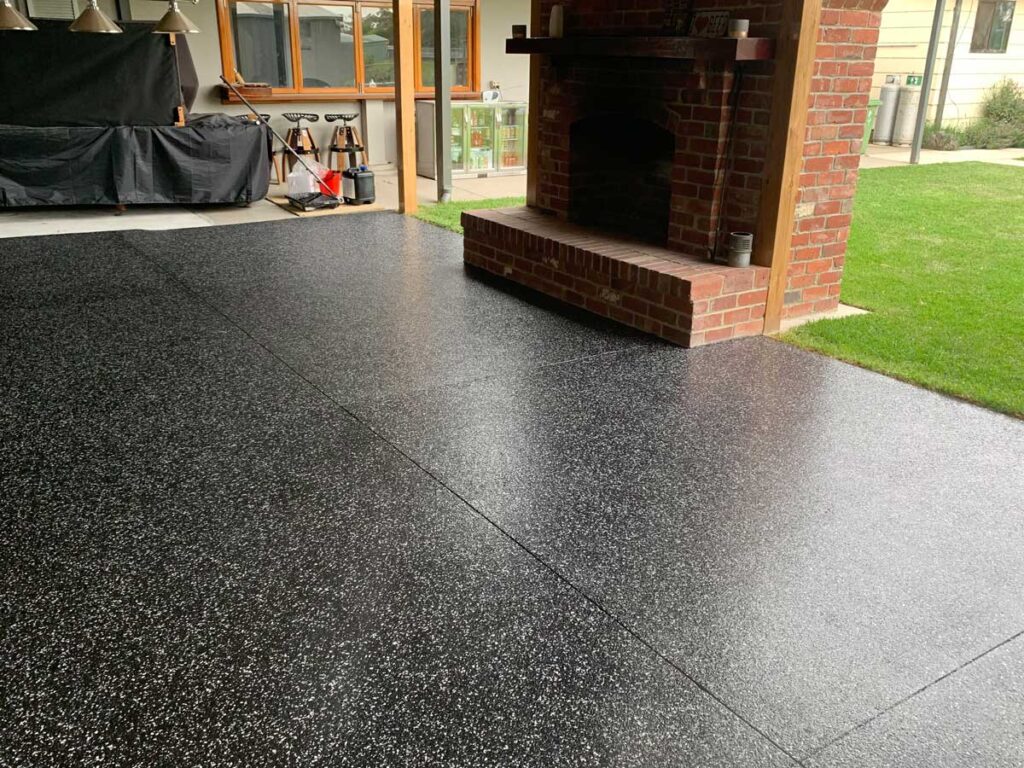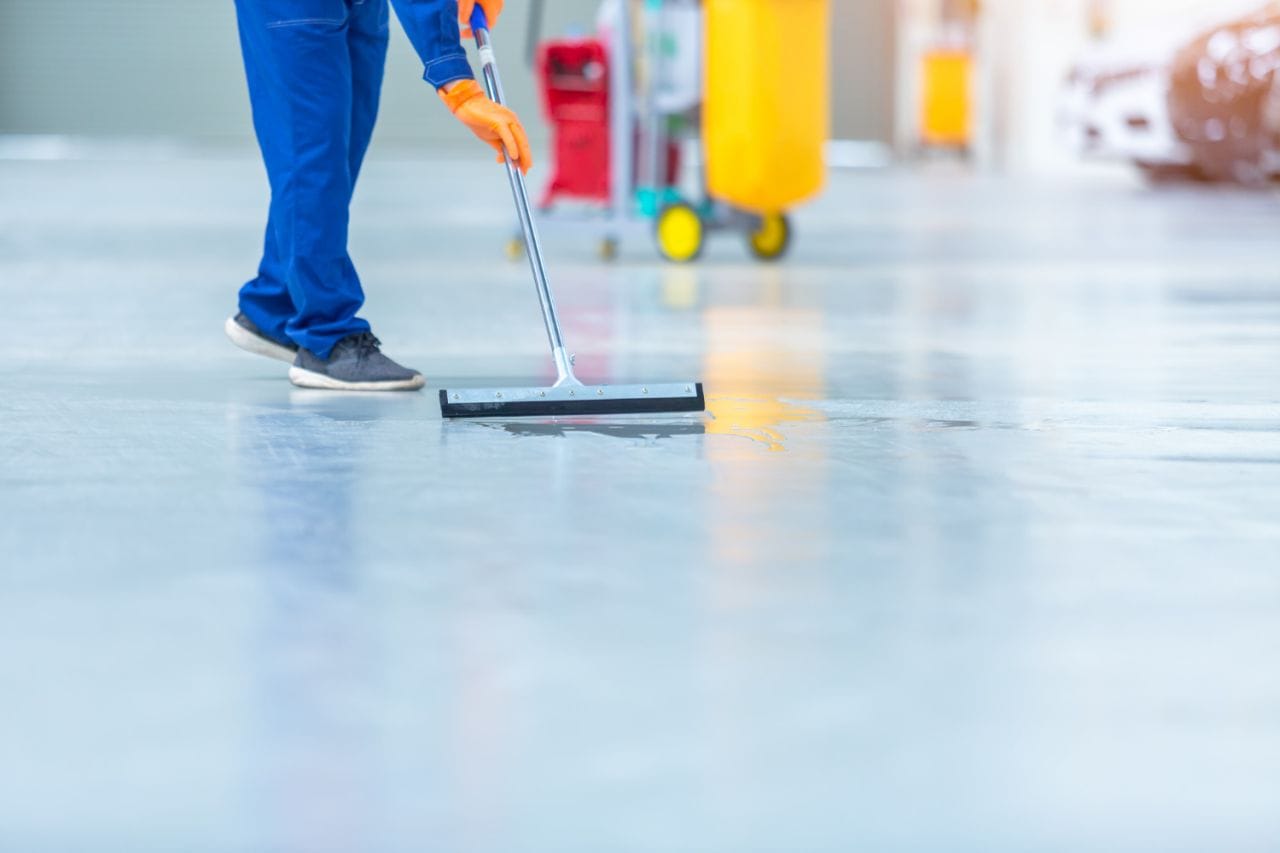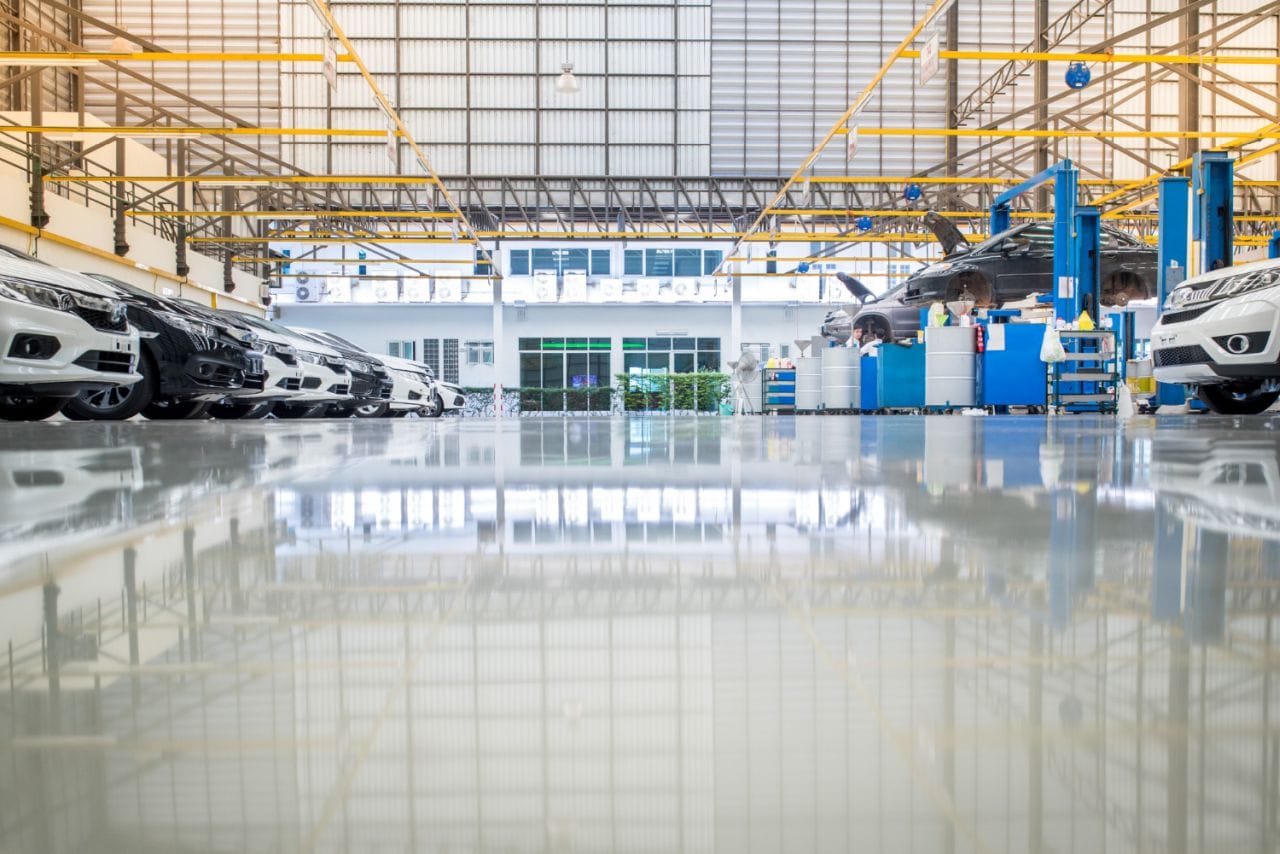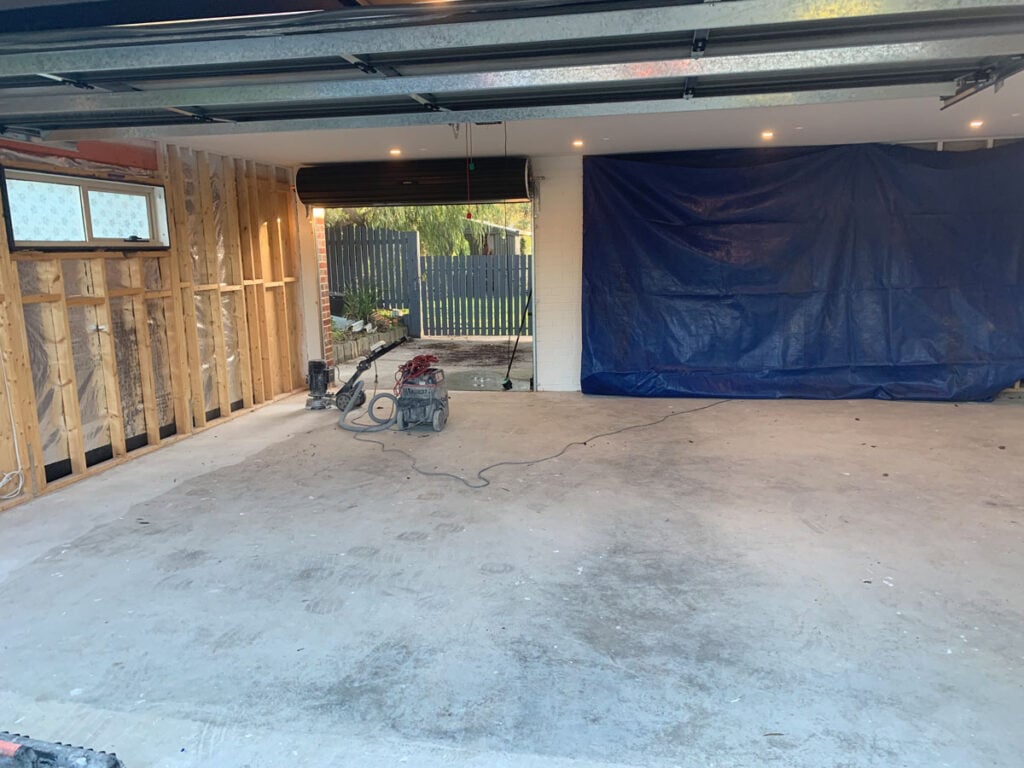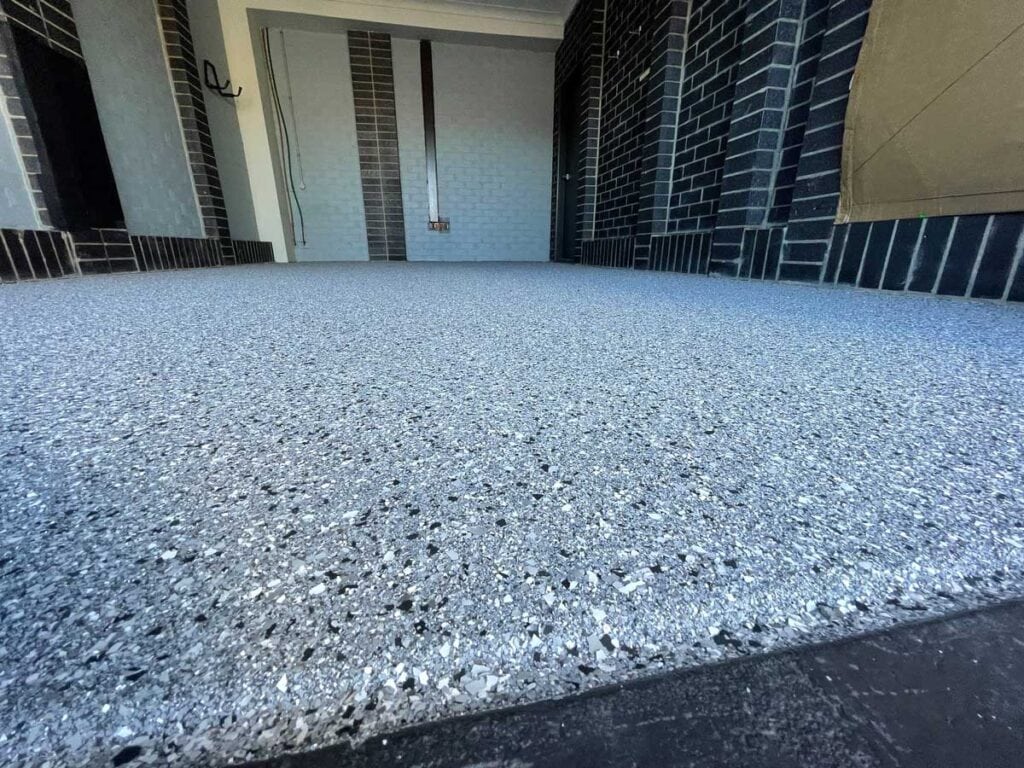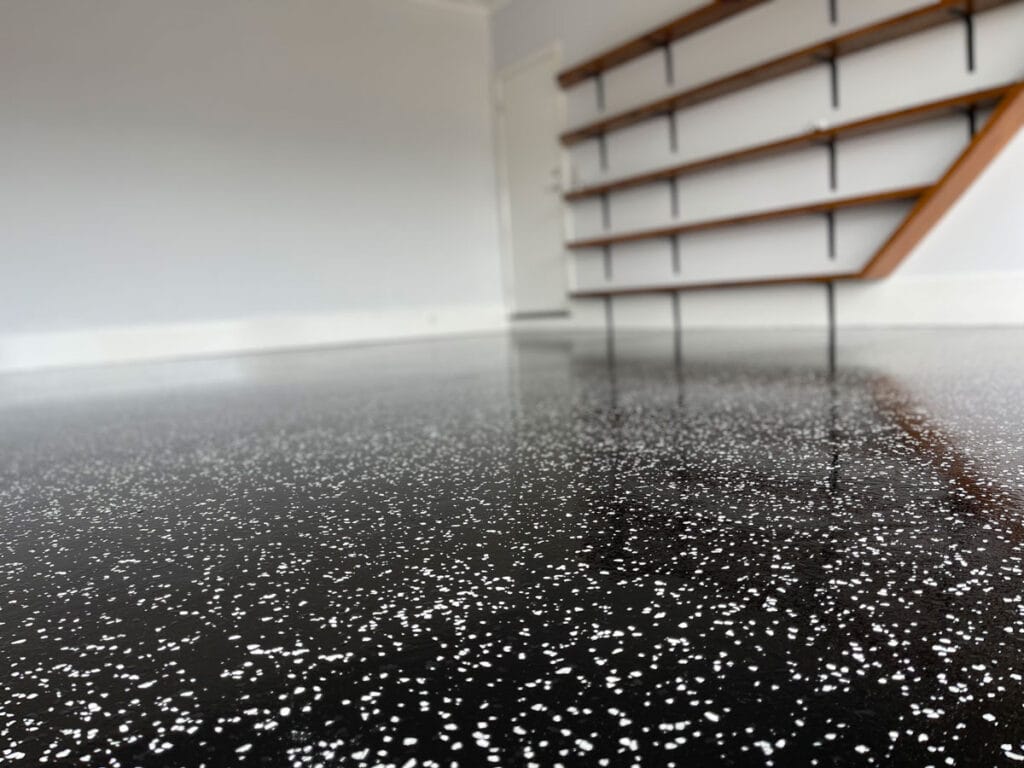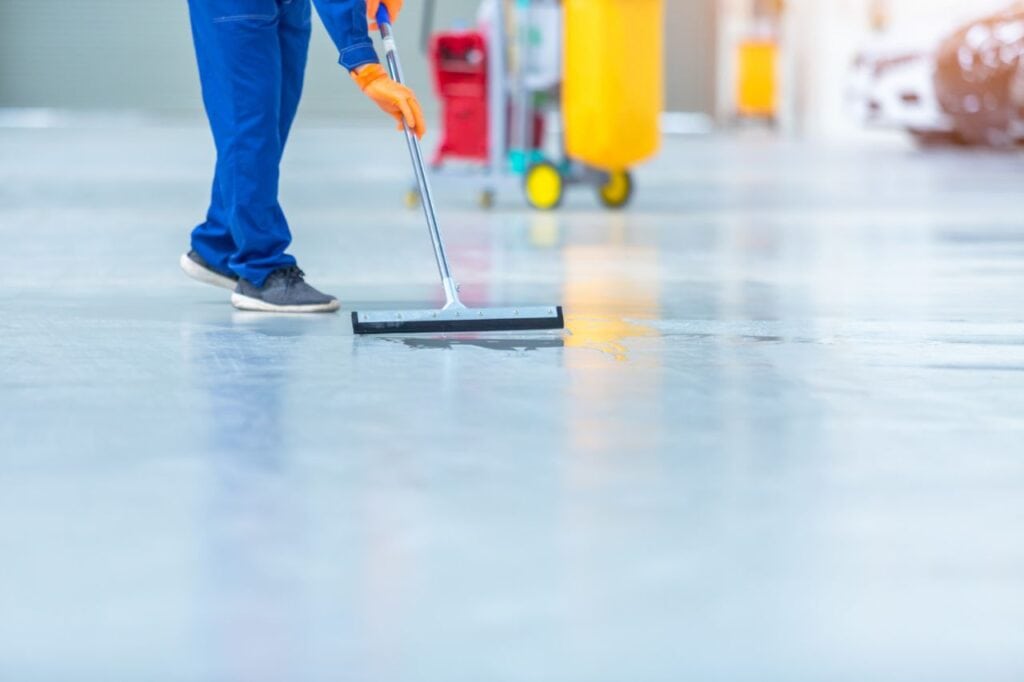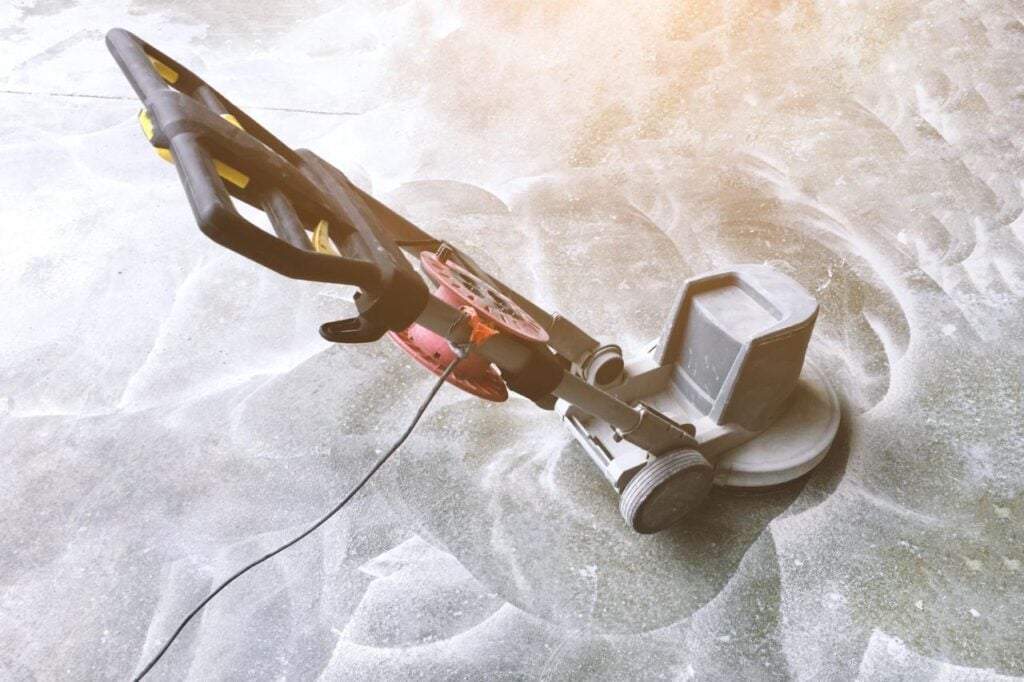Epoxy floors are well-known for their longevity, resilience, and ability to withstand wear and tear for many years.
However, there are some owners of epoxy floors who experience peeling, flaking, and other damage to their epoxy floors, which may cause some headaches for the owners. In addition, epoxy flooring frequently peels when the necessary preparation steps leading up to installation are skipped.
The problems that are outlined below may appear after installation, but they need to have been addressed and might have been averted prior to the installation of the epoxy floor.
Before you install your epoxy floor, it is in your best interest to consult with an experienced installer from a company like Liquid Floors. Doing so will help you save time and money in the long run.
Causes An Epoxy Floor To Flake
Epoxy flake flooring is an excellent choice for use as a garage floor and should be given serious consideration.
The two materials, vinyl and epoxy, are mixed together to create a pattern that is random and looks gorgeous, like marble or granite.
It is imperative to have an appropriate garage floor in order to store a vehicle in addition to other assets; therefore, you shouldn't save on flooring and settle for subpar options.
Stain Removal
Because your concrete slab has seen better days, you might be thinking about replacing an epoxy floor in its place. Whether they are located in a private garage or an industrial manufacturing plant, concrete floors are susceptible to a certain amount of wear and tear.
If your concrete floor has been subjected to some wear and tear, adding an epoxy floor coating may appear to be a simple method to cover up the stains and assist in the preservation of the concrete.
On the other hand, those stains may contain oils and chemicals that will float to the top after the epoxy floor has been applied. These chemicals and oils will seep out of the concrete, pool under the coating, and cause bubbles and flaking to appear on the surface.
Sealant Removal
Numerous concrete floors are coated with sealants or coatings in order to protect them from being stained. However, in order to install an epoxy floor, these sealants will first need to be removed. If the seal is not removed, the epoxy floor will not be able to connect correctly to the concrete slab that is underneath it, which will result in bubbles and flakes of the resin.
Pouring water on the flooring is a quick and easy technique to assess whether or not it is treated in some way or has a sealer applied to it. If the water is beading up on the floor or if it does not soak into the concrete, the concrete is probably sealed with a thin layer of sealant.
Cleaning Agent Removal
It is essential to wash away the cleaning agents that you used after effectively removing stains and oils from the surface of your concrete, but it is also important to remove the cleaning materials that were used.
These cleaning agents may contain fluids and chemicals that will leave a residue behind, which will lead to the same end as the stains, which is the epoxy floor bubbling and flaking after it has been installed.
If you do not let the cleaning solution dry up on the concrete surface, you may be confident that it has been completely removed. As the concrete dries, it will absorb the liquids, which will prevent a proper binding between the epoxy floor and the concrete.
Concrete Preparation
Before installing epoxy flooring, the concrete must first be adequately prepared in order to address any of the difficulties described above. After the concrete has been poured, there is yet another consideration that must be taken: check to see that it has been given sufficient time to cure.
Concrete floors have a high water content that continues to evaporate for several months after they are poured.
When an epoxy floor is laid over concrete that hasn't been given the appropriate amount of time to cure, the flooring will not attach to the concrete in the correct manner.
As was mentioned earlier, bubbles and flakes will appear in the epoxy coating if it is unable to form a strong enough bond to the concrete.
Following the steps outlined above is necessary to ensure that your epoxy floor is installed correctly and will serve its purpose for the longest amount of time. However, if you are unsure as to whether or not your concrete is ready for the epoxy coating, it is preferable to get the assistance of a trained specialist. Liquid Floors will be able to assist you in evaluating the state of your concrete to determine whether or not it is ready for the installation of an epoxy floor.
Reasons You Must Consider Epoxy Flake Flooring
Epoxy flooring built specifically for domestic use comes included with a plethora of additional benefits that are meant to lengthen the useful life of your residential investment.
Therefore, a garage floor that has been completed with flake epoxy is the perfect solution, whether the goal is to improve the appearance of your home or to increase your dedication to the safety of your family. And the top five causes for that are as follows.
Aesthetics
When combined, vinyl and epoxy flakes can produce a design that has an appearance that is incredibly similar to that of marble, quartz, or granite. In addition, this design can give your garage floor all of the protective benefits it needs to continue to serve its purpose.
There is a wide variety of color combinations available to pick from, making it possible for the epoxy to coincide with any aesthetic goal you may have had in mind for the way the garage appears.
In addition to this, the epoxy provides the floor with a flawless surface by covering any irregularities that were left after troweling the concrete.
Economical And Durable
A coating solution that is both long-lasting and durable is a resin flake combination. Epoxy, which is a thermosetting resin that cures, provides a stable and solid coat in contrast to paints, which are applied and allowed to dry.
A simple concrete floor may not survive nearly as long as a floor covered in a coat, which can also be readily repaired and replaced when necessary.
Dust And Spill Resistance
Since epoxy is a topping layer, it naturally has a resistance to dust; the majority of dust, which is in the form of a powder, settles off of bare concrete. In addition, there will be no dust that needs to be cleaned up because the concrete floor that lies beneath the topcoat has been sealed.
In addition to this, the curing process that epoxy undergoes causes it to permanently adhere to itself, so it is naturally resistant to moisture.
Epoxy is especially helpful in the event that there is flooding or any other kind of spill in the garage. Any spills can be quickly cleaned up with just water and soap, making the process of cleaning straightforward.
Slip Resistance
When wet, certain epoxy flake coats may become sticky; nevertheless, this characteristic is typically attributable to the color and pattern that was selected for the endeavor. Even if this is not an issue in our dry environment, an additional layer of protection may be achieved by combining the coating with a slip-resistant aggregate. This can be done if you want to make absolutely certain that no accidents take place.
Easy Maintenance
When the epoxy floor covering gets cracked or otherwise damaged, it is really simple to repair the issue. Cracks can be scored with a specialized blade, cleaned up, and then covered with additional epoxy to ensure that the coating is well sealed.
The expanding epoxy will make sure that every one of the defects is fixed, and the part of the epoxy flake that was fixed will be resistant to further cracking in the future.
Using epoxy flake flooring will make spending time in the garage more enjoyable for you, and the color combination will ensure that each section has its own identity while still maintaining a sense of cohesion. Because the coating is optimized for driving, you can be certain that your vehicle will not cause any harm to other vehicles as you drive it into or out of the garage.
Epoxy flake flooring is an excellent and cost-effective solution to improve the look of a property while also increasing its value because it is both useful and appealing. Be careful to ask the contractor who installed your epoxy flooring to install it.
Epoxy Flooring Is Durable
The requirement for durability, also known as longevity, is at the top of the priority list regardless of whether the structure in question is a high-end company showroom or a typical, daily concrete house garage.
To that end, residential garages are frequently regarded as a safe haven that bridges the gap between the outdoors and the indoor worlds for a wide variety of people, including families, amateur (and professional) mechanics, collectors of classic cars, and people involved in any other vocation, activity, or hobby imaginable.
However, due to the fact that they will be used for such a significant amount of time, residential garages require proper maintenance so that they can last all of the upcoming activities as well as the seasons.
To our good fortune, the response that is most likely to be profitable is also the one that is the simplest.
Beyond just brushing a protective layer of epoxy onto your original concrete floor, installing high-quality flake epoxy floor coatings in your garage requires additional steps. In point of fact, in order for a residential garage to be referred to as having genuine epoxy flooring, the concrete floor must have a minimum of two coats of resin, which results in a depth of around two millimeters. This is required.
When applied to concrete surfaces like those found in residential garages, this industry-standard further emphasizes how highly durable floor coverings like epoxy resin are. This is especially true when tried to compare to other flooring options that do not have the same level of credibility.
When compared to a concrete slab, for instance, an epoxy surface is significantly more advantageous due to its capacity to sustain more than 10,000 pounds of pressure per square inch (psi). This is especially true when considering all factors of longevity (withstanding traffic, stain-resistant, load-bearing, chemical-resistant, , abrasion-resistant, etc.)
Epoxy Floors Have Unlimited Aesthetic Possibilities
The question that needs to be answered is "to flake or not to flake." Adding flake in one of an infinite number of custom color combinations to your epoxy is one of the easiest and most impressive ways to achieve the required effect. just that if you're searching for something that increases safety (we'll get to it in a sec) and adjusts with your overall individual choice. If you're searching for a "feel" for your private garage while also on the search for a product that enhances safety (we'll reach that point in a second), then adding one
Epoxy flake improves the performance of high-performance flooring by adding unique color and texture that can be tailored to match any design aesthetic. With over 150 distinct factory colors already developed and in rotation, it is not difficult to generate fresh and fascinating color combinations for your new flooring.
Epoxy flake floor solutions are widely used in both new construction and remodeling projects nowadays because they offer a number of advantages. This indicates that the application of an epoxy floor coating can be easily incorporated into the process of new construction, and it can also be used to revitalize an older, already-existing garage floor.
Epoxy Coating Is Slip-Resistant
Because one of the most important things to us at Craftsman Concrete is making sure that each and every customer is safe, supporting flake epoxy floors comes as second nature to us. Because they lack texture, the do-it-yourself garage floor paint kits sold in big-box retail stores are renowned for producing flooring that is hazardously slick.
Using our epoxy floor coating procedure, epoxy flakes will leave your concrete surface with a finish that resembles an orange peel. This will considerably increase the surface's resistance to slipping, which will improve safety. For this reason alone, flake flooring is fairly prevalent in a variety of setup processes, such as the parking area at your neighborhood fire station.
Epoxy Flooring is Easy to Clean
Epoxy flooring does not require any upkeep at any time. Now that we have that established, let's take it a step further and reiterate what we just said. If you have epoxy flooring installed in your garage, you have an investment in a surface that is long-lasting and nearly never needs to be maintained.
This eliminates the need to both apply and remove floor wax from your floors. So, how exactly should you go about cleaning the residential epoxy floors in your home?
When you have soap and warm water on hand, you are already well on your way to cleaning concrete floors so that they feel and appear as good as they did when they were first installed. Even if fluids are left on the floor for an extended amount of time, these epoxy materials will not become discolored or damaged since they are impervious to all of the different kinds of automotive fluids.
Epoxy Finishing can be reused indefinitely. It is well knowledge that Craftsman Concrete is devoted to the well-being and preservation of our natural surroundings. In light of this, epoxy painting is the ideal medium for bridging the gap between fashion and function while also being environmentally responsible.
If a solid epoxy flake floor starts to wear, it can be fixed and refreshed (read: sanded and treated ) by the swiftly apply of a fresh topcoat. This is in contrast to centralized single-coat epoxy constructions, which cannot be fixed or renewed.
In the extremely uncommon occasion that the floor is scratched substantially, new flakes can be put into the damaged area to give a restoration that is invisible to the naked eye.
The Proper Way To Install An Epoxy Flake Floor
The incorrect preparation of the concrete substrate is the primary factor that contributes to the failure of epoxy flake flooring.
Contaminants
The first step in installing an epoxy flake floor is to ensure that the concrete is properly prepared. Even if your car doesn't have an oil leak, it won't be long before a freshly poured concrete floor has shadowy or spotty spots that develop worse with time. This is true even if you don't change the oil very often.
It is possible for contaminants such as road tars, oils, and grease to make their way from the roadways that you drive on to your tires, and then from your tires to the floor that you park on. It's possible that a high-pressure washer can remove those impurities.
Pressure washing, however, is not sufficient to adequately clear a concrete garage floor for an epoxy coating on its own. Even if those impurities could be washed away, you would still be required to open up the gaps in the concrete since the epoxy needs to sink in and "bite" something in order to make a strong connection. This can only be accomplished by opening up the pores.
To Smooth, To Shiney, Or Non-Porous
If there is nothing on top of the concrete, you can run your fingers over it and get the impression that it is quite smooth. You can see and feel that your concrete floor is slick, and it may even still be shining, regardless of whether or not it is spanking new or thirty years old. When a hard floor is laid, it is troweled smooth, and then a curing agent is added to cover the pores. This is why it takes so long for a concrete floor to cure.
However, in order for the epoxy to attach to the concrete, the "very low quality" do-it-yourself epoxy floor kits that are available in big-box stores tell you to "acid etch" the concrete first. They tell you to put muriatic acid in a sprinkling can, sprinkle it over your garage floor, let it sit for a little while, and then hose off the floor when it has had time to sit. They don't even think it's necessary to convey the potential risks to people's health and the environment that that dog and pony show poses. It should come as no surprise that none of the do-it-yourself epoxy kits work.
Diamond Grinding The Concrete
The grinding process removes all of the surface pollutants and opens up the pores of the concrete, allowing the epoxy to better penetrate and adhere to the concrete's exterior surface.
We achieve this by employing concrete diamond grinding equipment to remove around 1/16 of an inch off the top layer profile of the concrete. This allows the pores to reopen.
Diamond grinding is required by all makers of commercial-grade epoxy, and in order to have a good bond, you need to do it.
When handymen or painters who are in way over their heads with an epoxy floor installation attempting to persuade somebody that they simply need to pressure wash or chemical etch the floor, and that is "good enough," it never fails to make me giggle.
That is not the situation at all. What they are really telling you is, Allow me to ask you this. If a carpenter came to your house without a saw, would you hire them? If a mechanic didn't have a tool, would you hire them? Would you hire someone to work on your roof who didn't have a ladder? They are under the impression that you would not.
If you don't have a diamond grinding machine, there's no reason to hire an epoxy installation professional, is there?
Repair The Concrete
When the concrete has been a diamond basis to the desired smoothness, we will go back over it and clean and fill any cracks, divots, chips, expansion joints, or contraction joints that are apparent.
Apply The Pigmented Basecoat To The Floor
The colored basecoat was subsequently applied by us. Both epoxy base coatings and polyaspartic basecoats have their advantages and disadvantages when it comes to the application of an epoxy flake floor in a garage. Both will be put in place. The explanations for this are complex and would require their own post due to their length.
Add Decorative Colour Flakes
After that, we spread the flakes so that there is complete coverage. We refer to this behavior as flaking until rejection.
Adding Colour Flakes To Your Garage Floor Epoxy
Epoxy Color Flake is an excellent choice for use as a floor covering on concrete surfaces, both indoors and outside, as well as in spaces such as workshops, basements, and garages. Epoxy is combined with vinyl chips to provide a coating solution that is permanent, seamless, and has the same stunning appearance as granite, marble, and quartz. The random pattern that this creates is called a "random design." Epoxy color flakes don't peel or fade, which represents one of the most significant advantages of using them.
Adding Flake To Your Garage Floor
The reasons why decorative vinyl epoxy flake is used so frequently are as follows:
- Creates a Granite Look
- Economical and 100% Renewable
- Creates an Abstract Look - Depending on Selection
- Improves Traction
- Easy to Maintain
- Increases Safety
- Durable
These gorgeous flake resin-coated floors are much more long-lasting than other types of pre-engineered flooring, which can grow rather pricey and are not quite as robust. In addition to having exceptional abrasion and chemical resistance, flakes can be colored to the customer's specifications.
The use of soap and water is all that is required for cleaning and maintenance. If, after a number of years, you decide you want to give it a new look, all that is required is to apply another topping, and it will regain its former luster. Additionally, the coating is immune to germs and moisture.
Moreover, the use of epoxy color flakes results in the formation of an insulating layer that reduces the transmission of sound better than any alternative flooring.
Safety, Function, And Aesthetics
The fact that flake flooring is slip-resistant and effective in a wide range of settings is another advantage of this type of surface. You can drive on it, enjoy working on garage projects, participate in shop activities, and like the way your new floor is an expert at concealing damage and stains.
Flake color chips have a coating that is extremely one of a kind and are made from a patented blend of resin, filler, and pigment. The use of random shapes lends a customized feel to each area and always produces a blend of random and basic pieces that looks stunning when applied to surroundings that have been coated.
Typically, epoxy flooring lasts 2 to 3 years in heavy traffic. Commercial properties—like garages, restaurants, or factory spaces—with lots of daily foot traffic can expect this experience. However, with proper care and maintenance, your epoxy flooring may last much longer.
- Strong Application Fumes. During the epoxy application process, wet epoxy gives off an unpleasant smell. ...
- Long Curing Time. ...
- Slippery When Wet. ...
- Economical Flooring Choice. ...
- Resistant to Damage. ...
- Weather-withstanding. ...
- Aesthetically Pleasing. ...
- Protects and Decreases Wear & Tear.
Extremely safe – Epoxy is a very safe coating for your hard floors. It's slip resistant, shock resistant, and less abrasive than concrete and other types of industrial flooring. ... It can also withstand heat of up to 200 degrees, making it a better choice than most other types of flooring when it comes to fire resistance.
